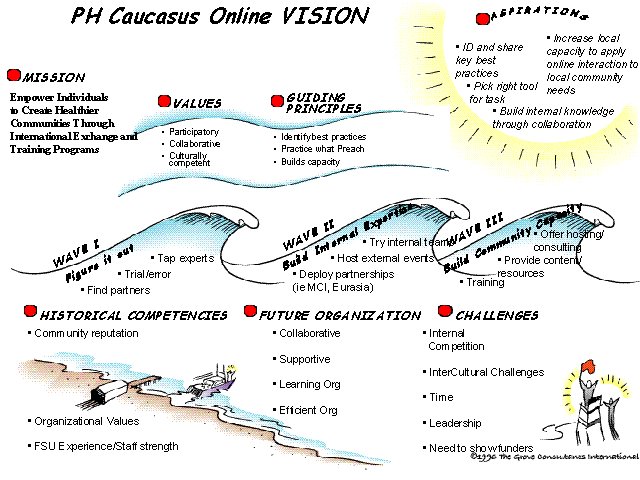|
[ Home | Online Community Toolkit |Online Community Resources ] Harvesting, Weaving and Creating Summaries
by Nancy White, last edited 3/2003
Online conferencing suffers from too much volume and what has been labeled the "tyranny of recency over relevancy." Even in threads highly focused and on topic, gems quickly get buried and action items forgotten. Important side topics either dominate, or die. This creates the need for systems to harvest information, gems, action items and decisions. Who Does the Work This "harvester" role often falls to the facilitator. In larger communities or diverse, multithreaded situations, this is rarely an achievable option and the work needs to be spread to more people. Purpose Before you start to harvest, think about the following questions: Timeliness If you've ever tried to summarize a hot and heavy thread after a week or a month, you know what a daunting challenge that can be. The longer you delay summarizing, the harder it can be. It is often good to keep up daily in heavy discussions. Keep notes in a separate word file, or use features such as the Caucus "notebook." Content Based on your determined purpose, there are a number content approaches you might take including: Some conferences have protocols for posters which aids in the creation of summaries and searching for content. Participants can be asked to annotate each of their postings with key words, or to provide a 'title' to their post. Then harvesters can more easily skim or search through material for relevant citations. Examples A visual summary using a template from the The Grove.
Another interesting example of visual summaries! http://www.rootlearning.com/features/ASTD2002.html Tools Automated Solutions There is an emerging class of text analysis tools that can search text blocks for words, strings of words and even concepts. If this is of interest, check out Denham Grey's fantastic resource lists noted below. Resources and Readings
Full Circle Associates |
